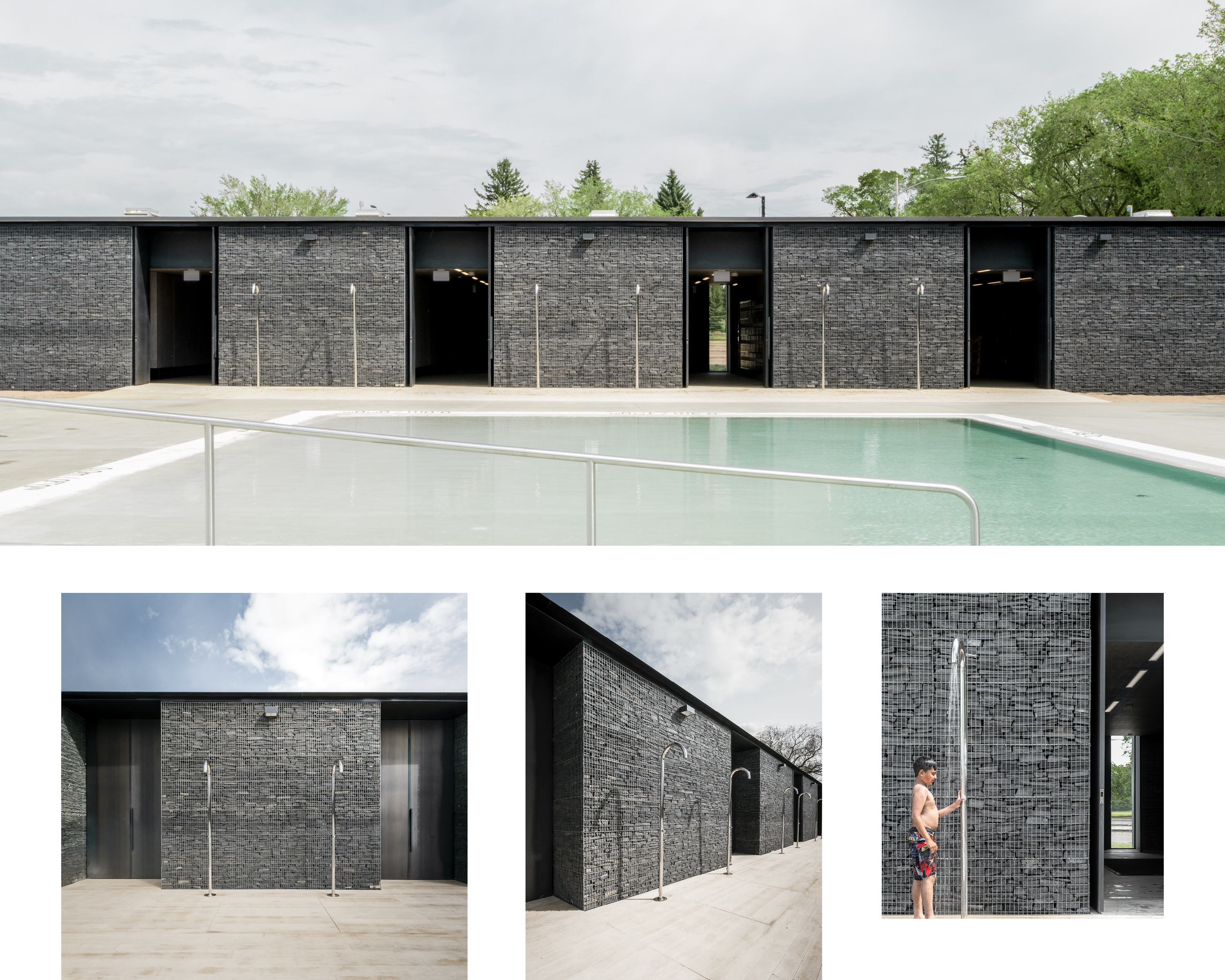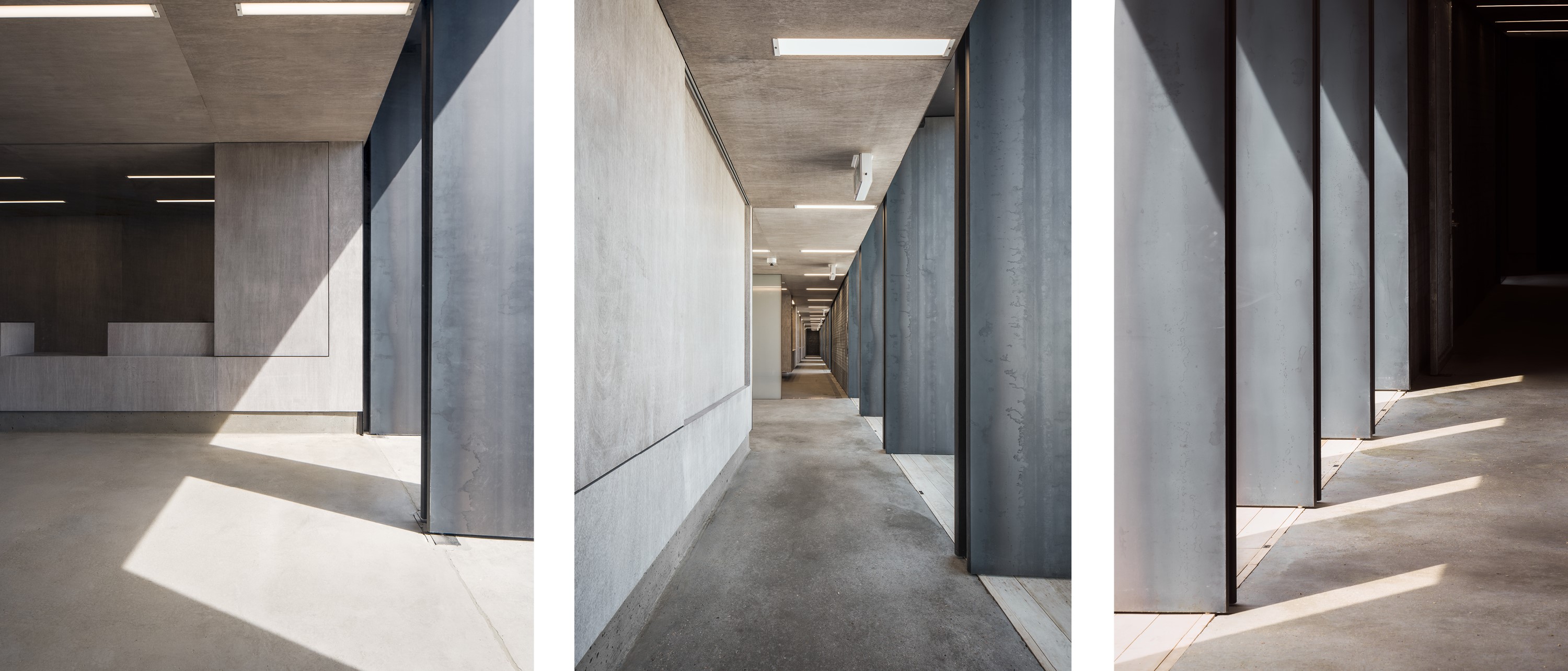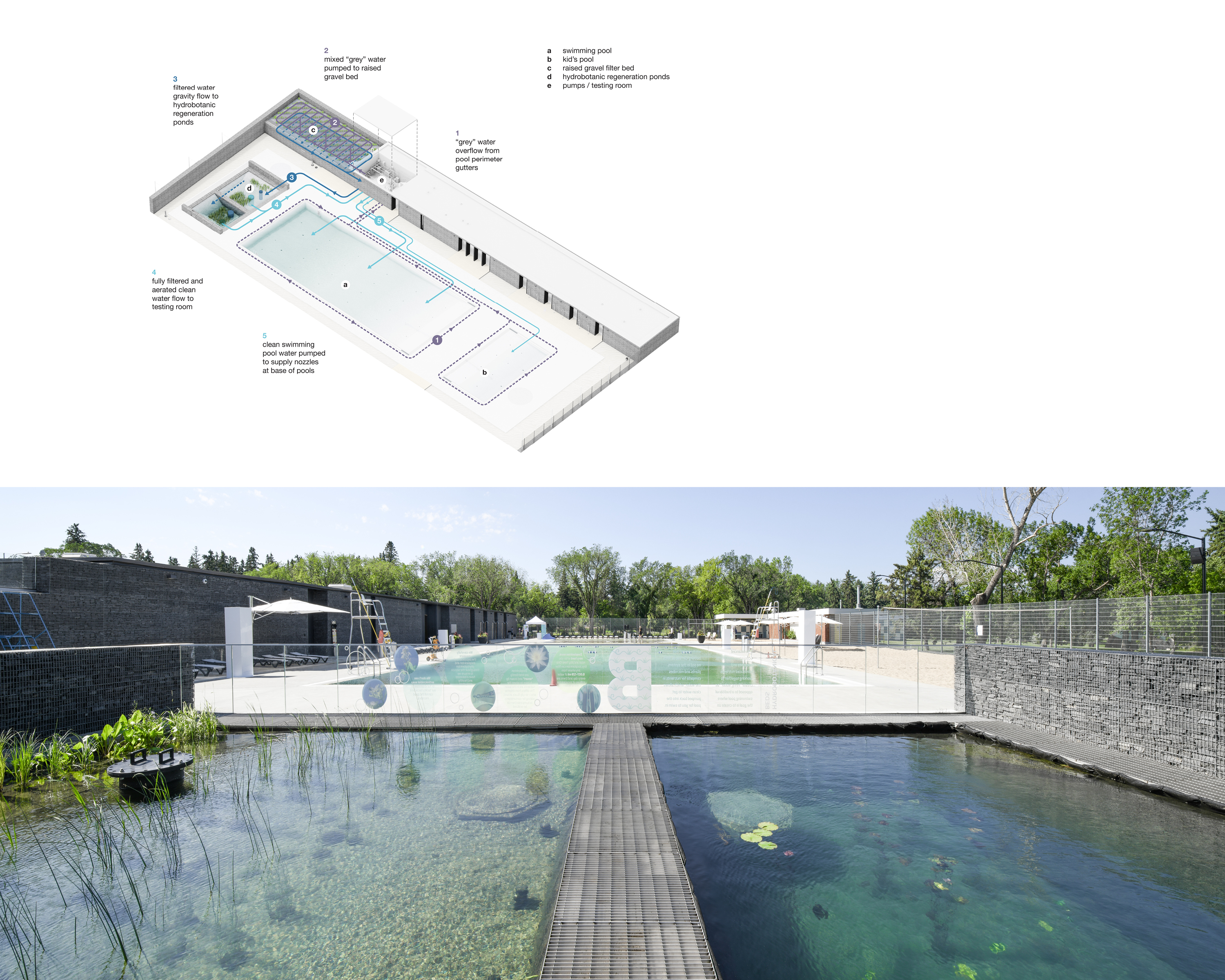Location: Edmonton, Alta.
Architect: gh3 architecture
OAA Design Excellence Awards Winner
Energy Efficiency and Carbon Stability
Architects must play a role in stabilizing the climate change crisis, lowering greenhouse gas (GHG) emissions in favour of clean power. This year, the OAA required Energy Usage Intensity (EUI) metrics as part of its awards submissions. The lower the number, the less impact the building has on our climate. To learn more, click here.
TEUI: n/a
The Borden Park Natural Swimming Pool is the first chemical-free public outdoor pool to be built in Canada. Located in one of Edmonton’s oldest parks, the facility comprises a toddlers’ pool, a main pool, two hydro-botanic filters, and a 6000-m3 granular filter. The design process began with developing a pool technology that cleanses the water through stone, gravel, sand, and botanic filtering processes. This inspired a materials-oriented concept for the change room facility to achieve a technically rigorous and aesthetically integrated design whose gabion basket stone walls visually evokes the idea of filtration.
The project’s materiality creates a fundamental conceptual connection between the technical demands of the pool and the design of the built enclosure. The elemental form and reductive materials ease the user experience and enriches the narrative of bathing in the landscape. The pool precinct is defined by a planar landscape where flush-to-surface detailing creates seamless interfaces. The gabion walls terminate with a lid-like flat roof that frames the tree-canopy of the park, enhancing the open-sky spaciousness. The juxtaposition of the constructed elements invokes the geology of the North Saskatchewan River and the topography of the prairieland’s edge.
Seasonal operation allows for passive strategies not otherwise feasible in the local climate. Gabion walls of local stone provide natural ventilation even when the building is closed; thermal mass moderates indoor temperatures, and the dark exterior creates a heat island effect in the shoulder seasons. In combination with gravity-fed filtration and efficient fixtures, the project has an impressively low energy intensity and minimal maintenance requirements for its designated use. The elimination of chemicals from the filtration process means there is no surface water contamination. Primary materials of stone and steel can be reused or recycled at their end of life.
There are over 300,000 public swimming pools in North America, but only two are natural swimming pools. While the technology has been established in some European jurisdictions for several decades, North American jurisdictions have been slow to embrace this idea. In the context of strained municipal budgets, increasing awareness of the health and environmental risks associated with chlorinated pools, and the value of public pools, is supporting climate-change resiliency.

Image Credit: gh3*

Image Credit: gh3*

Image Credit: gh3*